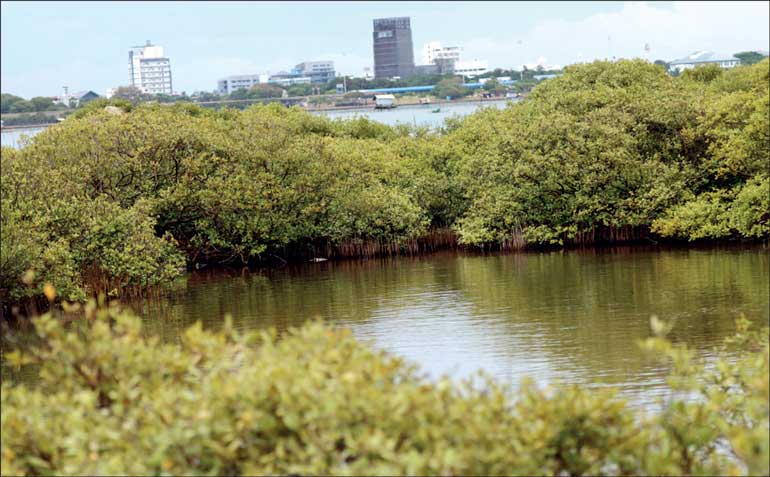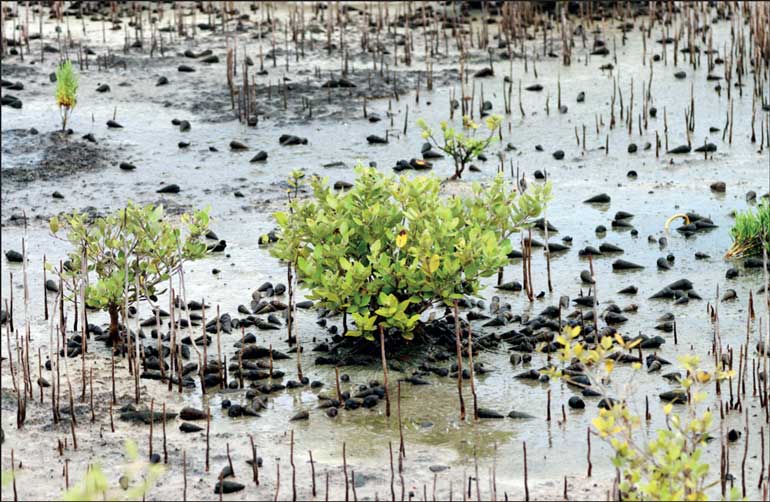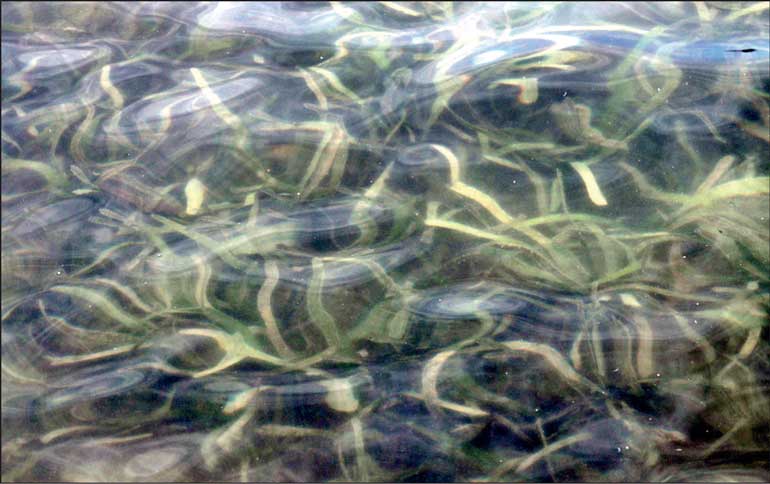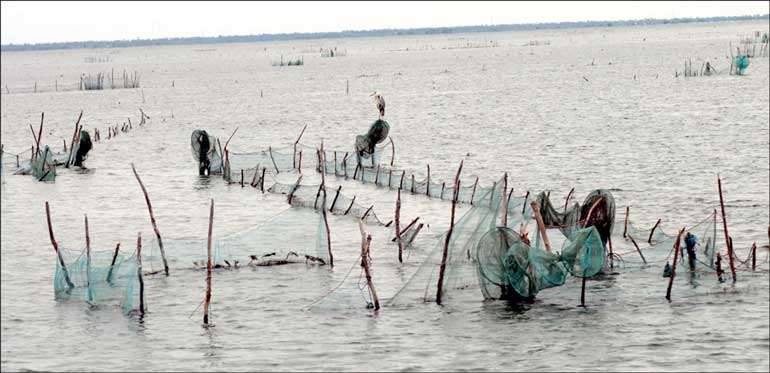Tuesday Dec 16, 2025
Tuesday Dec 16, 2025
Wednesday, 15 October 2025 00:00 - - {{hitsCtrl.values.hits}}

Jaffna city from Mandathiv. The natural barrier that protects the city

A home for all

Seagrass in shallow sea visible from above

Traditional fishing is all due to presence of blue carbon ecosystems
The Wildlife and Nature Protection Society is calling on the Government to block the Sri Lanka Cricket Board’s plan to construct an international cricket stadium complex on Mandaitivu Island in Jaffna as it has raised serious environmental and planning concerns. The proposed 52-acre development would include indoor stadiums, sports facilities, apartments, hotels, and parking but at significant ecological cost.
The Wildlife and Nature Protection Society’s statement is as follows:
Mandaitivu is irreplaceable
Jaffna, with less than 5% forest cover, relies heavily on its coastal vegetation, including over 50% mangroves, to balance carbon emissions, provide essential green spaces, and offer places of solace and celebration for its local community. The island supports seven true mangrove species and seven seagrass species, creating an integrated habitat that directly sustains fish species of commercial value and attracts numerous migratory birds. These ecosystems aren’t just scenically valuable but they’re economic engines supporting the fisheries industry and have immense potential for sustainable tourism initiatives. The island is deeply woven into Jaffna’s social fabric, offering breathtaking sunset views and serving as a cultural and economic anchor for the community.
The diverse mangroves, particularly the Rhizophora mucronata fringes, and salt marshes (both succulent and grass dominant type) form a critical protective barrier safeguarding Jaffna from coastal erosion, while silently binding sediments, storing carbon, and providing habitat for a vast array of animals and migratory birds. These ecosystems have served for years as a living laboratory for Jaffna University, nurturing scientific research and bright minds.
The site’s ecological importance is officially recognised. Northern Province Strategic Environment Assessment plan recognised this area to be protected for social and ecosystem welbeing. Mandaitivu has been declared a forest reserve, and the Greater Jaffna Development Plan 2024-2034 (developed by the Urban Development Authority) designates this location as a “High Sensitive Zone” where development should be minimised. The Government’s own Integrated Strategic Environmental Assessment recommends nature-based tourism activities like snorkelling for these islands and not large-scale infrastructure construction.
Mandaitivu is not just an island; it is the heart of Jaffna’s proud heritage, identity, and culture, shaped by its wealth of natural resources including biodiversity.
The safety concern
Beyond ecology, there are critical safety issues to be considered. Between 1980 and 2019, South Velanai divisional secretariat (which includes Mandaitivu) experienced 12 major flood events, the second highest in Northern Province. The 2012 floods affected 40,000 people; the 2017 floods impacted 35,000 residents. The area also faces extreme vulnerability to storm surges and falls within Sri Lanka’s highest wind loading zone, experiencing wind speeds of 49-54 m/s. Climate projections indicate temperature increases of 1.7-2.0°C by 2050, with increasing and erratic rainfall intensity. Building a major sports complex in such a disaster-prone location contradicts basic safety planning.
Sri Lanka’s global commitments and our reality
Sri Lanka co-champions the Commonwealth’s Mangrove Ecosystem and Livelihood Action Group and received the UN Decade of Restoration Flagship Award for mangroves. The nation led the declaration of World Seagrass Day at the UN General Assembly. Our national policy states: “Mangroves are of incomparable value.”
Yet this project would require massive land filling of saltmarshes and mangroves, triggering environmental damage through quarrying and sand mining elsewhere. It directly contradicts Sri Lanka’s Nationally Determined Contributions (NDC) and Net Zero commitments, which specifically integrate blue carbon ecosystems as climate solutions.
Also, this is not the time to further destroy our blue carbon ecosystems. At this moment, Sri Lanka is under a trade ban to export blue swimmer crab to the USA. Sri Lanka does not require further trade bans in future, and we need to be aware that the world is united to protect blue carbon ecosystems as they are one solution to global climate change
What we’re asking
Jaffna deserves an international cricket stadium. The region has tremendous potential, and cricket unites Sri Lanka with the rest of the world. However, this specific location is fundamentally incompatible with large-scale infrastructure development as already recognised by the national plans themselves.
We call on authorities to answer:
Local communities and subject experts deserve consultation on a project that affects their homelands, livelihoods and heritage.
We urge the government to identify a sustainable alternative location that allows Jaffna to have its stadium while preserving Mandaitivu’s irreplaceable ecosystem services for current and future generations.